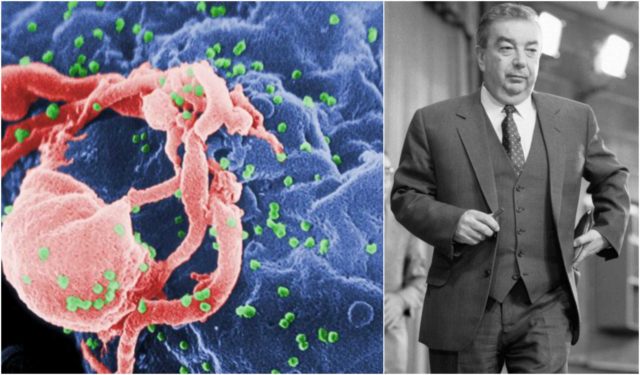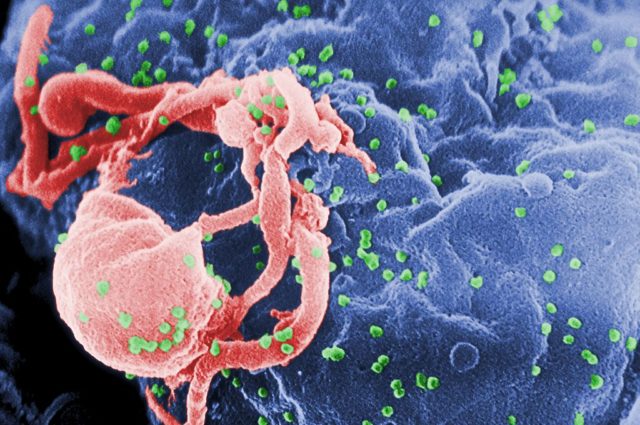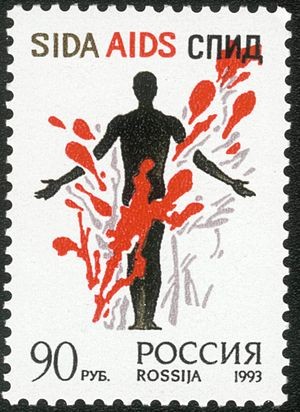
“Our friends in Moscow call it ‘dezinformatsiya.’ Our enemies in America call it ‘active measures,’ and I, dear friends, call it ‘ my favorite pastime.” – Col. Rolf Wagenbreth, director of Department X (disinformation) of East German foreign intelligence.
Operation INFEKTION was KGB propaganda about the HIV/AIDS virus being biological weapon created by the U.S.
This propaganda was just one of the many “active measures” (aktivinyye meropriatia, as the Soviets called them) as it was manipulation and media control, written and oral disinformation, use of foreign communist parties and front organizations, clandestine radio broadcasting, manipulation of the economy, kidnappings, paramilitary operations, and support of guerilla groups and terrorist organizations…pretty much as many other powerful nations.
Anyway, the main goal of Operation INFEKTION was to inspire sympathies among the world population for the Soviet Union while denigrating their opponents, foremost “the antagonist” in their own story – the United States.

In his article “Soviet Bloc Intelligence and Its AIDS disinformation campaign”, the senior historian at the US Army Center for Military History – Thomas Boghart writes that the whole AIDS disinformation campaign begun back in 1983 when on the 17th of July an obscure Indian newspaper “The Patriot” printed an anonymous letter headlined “AIDS may invade India: Mystery disease caused by US experiments”.
Written by a “well-known American scientist and anthropologist” in New York, the letter claimed that “AIDS…is believed to be the result of the Pentagon’s experiments to develop new and dangerous biological weapons.” It went on to state that the United States was about to transfer these experiments to sites in Pakistan, where they would pose a grave threat to neighboring India.
The ‘scientist’ also claimed that even though President Richard Nixon had banned US offensive bacteriological weapons research by executive order in 1969, implicated CDC (Centers for Disease Control and Prevention) scientists were sent to Africa and Latin America in order to discover dangerous viruses alien to Asia and Europe. Apparently, these ‘findings’ were first analyzed in Atlanta and Fort Detrick and thus the “most likely course of events” leading to the development of AIDS.
In the letter, the writer basically abused well-known facts for the virus in order to create paranoia among the people in India who were targeted as first for elimination by the U.S. or as the most important for the Soviets to conciliate with. It is stated in the letter that there was a great concern about contaminated blood donations; that AIDS was probably caused by a virus and that its first outbreaks were registered in the States.
These statements were empowered by reminding the public of the already known US biological warfare program – the government records obtained through the Freedom of Information Act by the Church of Scientology, which had documented biological agent experiments in the 1950s; CIA-sponsored testing of drugs on humans during the same time period; and the development of biological weapons until the late 1960s at Fort Detrick.

This was a serious conviction for the U.S. especially if one considers the sensitivity of the Soviets when they had been accused that the ‘yellow rain’ was developed in Moscow as biological weapon used in Viet Nam and Thailand.
However, the letter published in the “Patriot” didn’t inspire much of the expected fear among people it was ignored until the 1985 when three events might have contributed to a Soviet decision to reactivate the AIDS campaign.

Firstly, there was the US government report released in February 1985 in which it was claimed that the Soviets had broken the Geneva Convention by producing biological weapons.
Another thing was an article in Lyndon H. La Rouche Jr.’s Executive Intelligence Review where he accused the USSR for blocking the battle against AIDS.
The last thing was spread of AIDS within the USSR. The US saw a possibility of redirecting domestic concerns to another continent.
Hence, on 30 October 1985, an article by Valentin Zapevalov was published once again by Literaturnaya Gazeta, this time titled as “Panic in the West or What Is Hiding behind the Sensation Surrounding AIDS“.
Having decided to revive the AIDS campaign, the KGB informed its East German counterpart unambiguously that Moscow expected it to participate. To lend credence, the Soviet Union used a pseudo-scientific paper written in 1986 by a retired East German biophysicist named Dr. Jakob Segal. Segal’s first major contribution to the AIDS disinformation campaign was a 47-page pamphlet titled “AIDS—its nature and origin“, co-authored by his wife Lilli and Ronald Dehmlow a fellow retired Humboldt University professor.
The report was quoted heavily by Soviet propagandists, and the Segals were often said to be French researchers in order to hide their connections with communism. Dr. Segal postulated that the AIDS virus was synthesized by combining parts of two distantly related retroviruses: VISNA and HTLV-1. An excerpt of the Segal report is as follows:
“It is very easy using genetic technologies to unite two parts of completely independent viruses… but who would be interested in doing this? The military, of course… In 1977 a special top security lab… was set up…at the Pentagon’s central biological laboratory. One year after that… the first cases of AIDS occurred in the US, in New York City. How it occurred precisely at this moment and how the virus managed to get out of the secret, hush-hush laboratory is quite easy to understand. Everyone knows that prisoners are used for military experiments in the U.S. They are promised their freedom if they come out of the experiment alive.
Elsewhere in the report, Segal said that his hypothesis was based purely on assumptions, extrapolations, and hearsay and not at all on direct scientific evidence.
Mission complete – Mass hysteria around the World – The AIDS story was repeated by Soviet newspapers, magazines, wire services, radio broadcasts, and T.V.
It appeared forty times in Soviet media in 1987 alone. It received coverage in over eighty countries in more than thirty languages, primarily in leftist and communist media publications, and was found in countries as widespread as Bolivia, Grenada, Pakistan, New Zealand, Nigeria, and Malta. A few versions made their way into non-communist press in Indonesian and Philippine press.
As written in Time’s article from 1986 The Soviets targeted territories with US military bases on their soil. Turkish broadcasts urged the closure of US bases because they were allegedly breeding grounds for AIDS; in late 1985, North Korea began its own AIDS propaganda operation, portraying US troops in South Korea as carriers of the epidemic; an English-language, Soviet-inspired broadcast in Asia alleged that outbreaks of AIDS “are as a rule registered in the areas near American war bases.”
By targeting nations where American troops were based, such as South Korea and Turkey, the Soviets sought to stir concern among the local population, create pressure on US allies to send Americantroops packing, and generally discourage contact with American citizens. There were allegations that Washington was using AIDS as a racial weapon against Africans began circulating across the continent in the wake of the nonaligned nation’s summit in Harare in 1986, where HVA and KGB had promoted Segal’s paper so diligently.

Ironically, many Soviet scientists were soliciting help from American researchers to help address the Soviet Union’s burgeoning AIDS problem, while stressing the virus’ natural origins. The U.S. politely refused to help as long as the disinformation campaign continued. The Segal report and the plenitude of press articles were dismissed by both western and Soviet virologists as nonsense.
US Embassy officials wrote dozens of letters to various newspaper editors and journalists, and held meetings and press conferences to clarify matters. Many of their efforts resulted in newspapers printing retractions and apologies.
In 1992, Director of Foreign Intelligence Service (SVR) Yevgeni Primakov admitted that the KGB was behind the Soviet newspaper articles claiming that AIDS was created by the US government.
As Boghart sums this story in his article “it would be mistaken to dismiss the Soviet bloc disinformation campaign as irrelevant or as the US government’s knee-jerk reflex to ‘blame the Russians.’ Studies have shown that whoever makes the first assertion about an event or occurrence has a large advantage over those who deny it later.”
